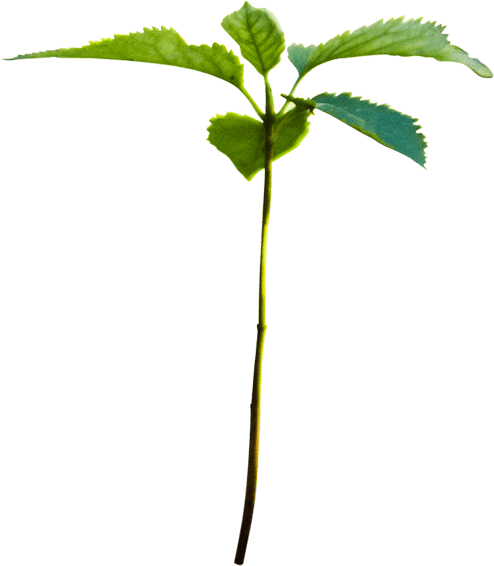Pflanzt Bäume!
Drei Billionen Bäume hat die Menschheit bereits vernichtet. Macht 400 pro Kopf, hat eine Doktorandin der HU ausgerechnet und engagiert sich für Ersatz
Nein, die Weihnachtstanne soll an dieser Stelle nicht schlecht geredet werden. Trotz möglicher Auswirkungen der Weihnachtsbaumplantagen auf Umwelt und Klima. Hier geht es um mehr – nämlich um alle Sorten von Bäumen, weltweit. Drei Billionen gibt es derzeit. Aber die gleiche Menge an Bäumen haben Menschen schon vernichtet, mithilfe von Axt, Feuer und moderner Technik. Das rechnet eine Studie vor, die im September in der Fachzeitschrift „Nature“ veröffentlicht wurde.
Eine Zahl mit zwölf Nullen, die die Biologin Laura Kehoe furchtbar deprimierte. „Die Probleme, vor denen wir heute stehen, sind so groß, dass man gar nicht weiß, wo man anfangen soll“, sagt Kehoe, die wissenschaftliche Mitarbeiterin am Geographischen Institut der Humboldt-Universität zu Berlin (HU) ist. In ihrer Promotion beschäftigt sie sich mit der Frage, welche Folgen die landwirtschaftliche Nutzung auf die Artenvielfalt hat. Auch die Forschungsprojekte, bei denen sie in Bolivien, Sambia, Südafrika, Mexiko und Guinea in Einsatz war, hatten die Erhaltung der Artenvielfalt zum Ziel. Ganz grundsätzlich aber treibt Kehoe die Frage um, wie wir Umweltzerstörung vermeiden oder vermindern können – zum Beispiel die Abholzung.
Kehoe fand nach der Lektüre von „Nature“ einen Anfang: Sie rechnete die einschüchternden drei Billionen auf alle momentan auf der Welt lebenden Menschen herunter – und kam auf 400 Bäume pro Person. Eine überschaubare, griffige Zahl: „So lässt sich leichter ein erster Schritt machen“, sagt Kehoe. Und der wäre: Jeder Mensch pflanzt die Bäume, die für ihn fehlen. Oder: Er spendet Geld für die Aufforstung anderswo auf der Welt.
Die Wissenschaftlerin tat sich mit einem Web-Desiger und einer Grafik-Designerin zusammen und schaltete im November die Internetseite www.400trees.org frei. Über diese Seite können nun alle, die Verantwortung für ihre Umwelt zeigen möchten, spenden. Für einen Baum sind 10 Cent nötig. 400 Bäume kosten $40. Eine Spendenquittung ist selbstverständlich – und weil ja bald Weihnachten ist, können Spender sich auch ein „Pflanz–Zertifikat“ mit dem Namen der beschenkten Person ausstellen lassen.
Das Geld fließt zu 100 Prozent weiter an eine NGO, die Laura Kehoe nach sorgfältigen Recherchen und Gesprächen mit den Initiatoren ausgewählt hat: Trees.org, seit 20 Jahren aktiv, gegenwärtig vor allem in fünf subsaharischen Ländern. Die Mitarbeiterinnen und Mitarbeiter bringen außer Samen auch Gerätschaften mit, sie vermitteln den Bauern Kenntnisse in Forstwirtschaft und Ackerbau. Und vor allem: Sie entwickeln mit ihnen einen Plan für die Zukunft. „Wenn Bäume gepflanzt werden, verbessern sich langfristig die Lebensumstände“, erläutert Kehoe: „Bäume beugen der Bodenerosion vor, tragen zur Fruchtbarkeit der Böden bei und bringen Nahrungsmittelsicherheit.“
Für über 6000 Bäume hat Laura Kehoe mit ihrer Initiative 400trees.org bereits Geld gesammelt. Und wenn alle Menschen, die sich einen Weihnachtsbaum nach Hause holen, 400 anderen Bäumen das Leben schenken würden, dann könnte es noch viele mehr werden.
Weitere Informationen
www.400trees.org
Kontakt
M.Sc. Laura Kehoe
Humboldt-Universität zu Berlin
Tel.: 030 2093-6847
laura.kehoe@hu-berlin.de
Dieser Artikel wurde zuerst in https://idw-online.de veröffentlicht. Artikel lesen.
A tree isn’t just for Christmas

Worker Icon CC-BY Luis Prado from the Noun Project
This Christmas, why not get your loved one a gift they don’t know they’re missing?
Sounds confusing I know, but hear me out because it might be the most original gift you give this year. A new study has shown that we have cut down 46% of all the trees we once had on Earth. That’s nearly 3 trillion trees in total, but if we divide that by the number of people that are alive today we are each missing 400 trees. This is a bit more manageable, but it still sounds like a lot. Don’t despair, there is an easy way in which you can plant a loved one’s missing 400 trees with the added bonus of combating climate change and even relieving poverty.
Meet Gladys

Gladys depends on her small farm to support her three children and two adopted orphans. The past few years have been tough for Gladys, the precious soil on her land is slowly eroding away due to heavy rains and the natural slope of her land. To make matters worse, Gladys grows a lot of coffee, but the market price in Kenya has dropped in recent years, leaving her with crops that cannot be sold for a fair price. She now depends mainly on her cow’s milk for income, but, like many farmers in the region, she uses the majority of her profits to buy expensive cattle feed.
We are a non-profit that partners with Trees for the Future to provide farmers across Africa with the tools and training to regenerate their land and create sustainable livelihoods. Trees.org have showed Gladys how to transform her degraded land into a forest garden that will benefit her entire family - including her cow. Gladys now grows her own highly nutritious fodder trees to feed her cow. Many trees have been planted on her land using contouring techniques which halt soil erosion and protect her from storms. At the same time, fast growing and nitrogen fixing trees are fertilising her soil and providing her with enough produce to sell at the market for competitive prices. Instead of relying on coffee, she now grows a diverse range of crops, including the much sought after and profitable macadamia nut. By the end of her first year, Gladys will have doubled her profits and paved the way for a secure future for her and her children.
With Trees for the Future your missing 400 trees can reduce climate change and provide a brighter future to those who are struggling to feed their families. For only $40, that’s what you would pay for a Christmas tree, you could buy the gift of 400 trees. The donation comes with a personalized certificate which can be sent via email or mailed out. This Christmas give the gift that keeps on giving!





